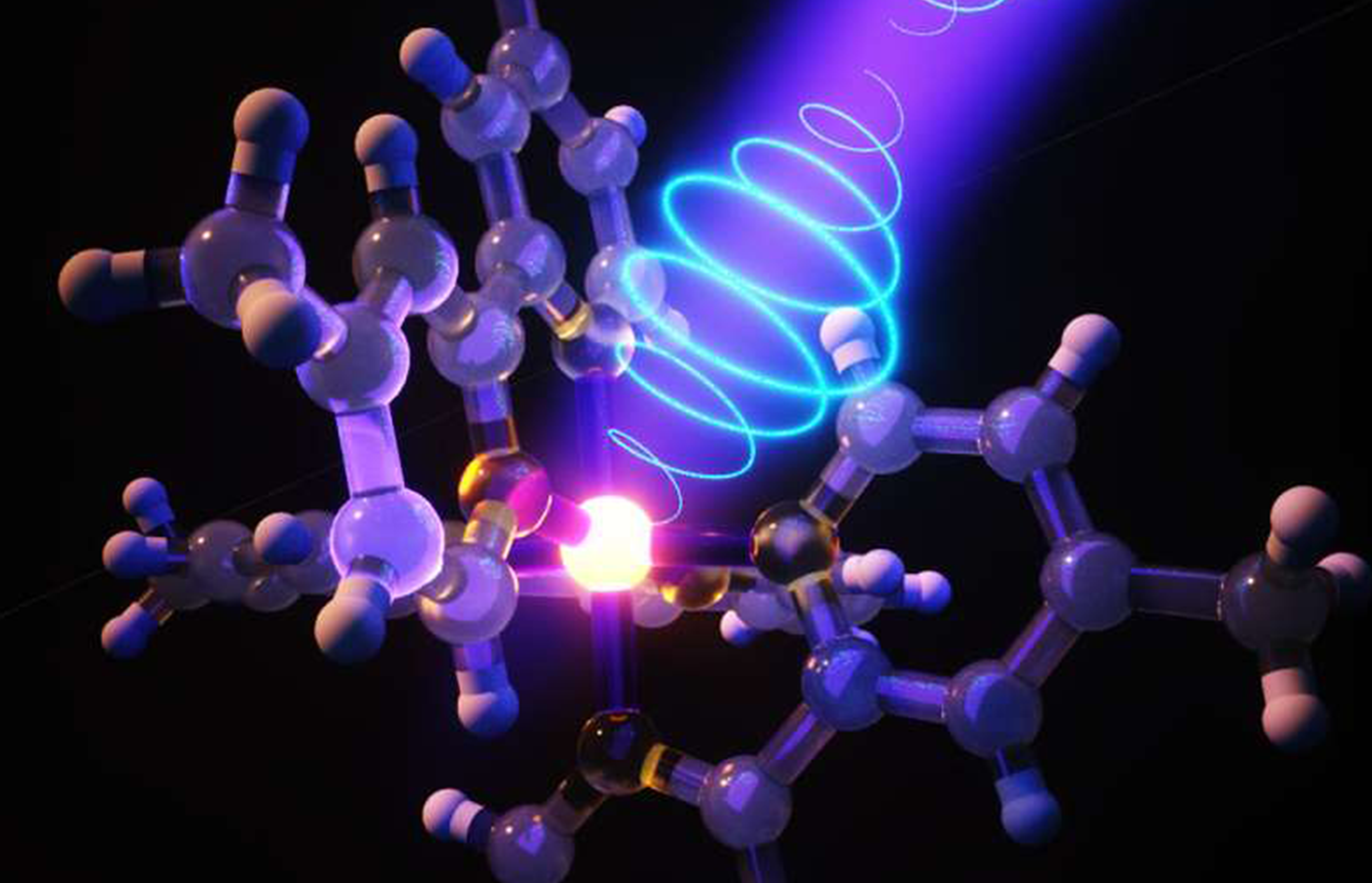
CHIRALITY
© Ella Maru Studio
Light, matter and chiral responses
Keywords
Chirality; circular dichroism; chiral interactions; circularly polarized light; chiral materials; orbital and spin angular momentum; molecular or plasmonic chiral nanostructures; chiroptical spectroscopies; electron spin.
The intertwining of the chirality of light and matter is an emerging paradigm that is revolutionizing the field of light-matter interactions and opening up new possibilities for the design and fabrication of materials with novel properties. Recent advances range from advanced chiroptical spectroscopy, i.e., the differential interaction of left- and right-hand circularly polarized light with chiral molecules, which, for example, can detect subtle (time-resolved) changes in biological tissues after illumination, to chiroptical effects enhanced by chiral molecular nanostructures, chirality-induced spin selectivity, and the creation of exotic chiral light with a particular interaction with matter. New multidisciplinary approaches to producing smarter or greener materials will rely on our ability to shape the local orientation of light and design and build innovative chiral structures. This axis aims to control the local orientation of light in space and time, which is necessary for the emergence of new ultrafast spectroscopic approaches, which ultimately will be used to create unexplored states of matter. On the other hand, the theoretical background for understanding the interaction of matter with highly multiplexed light due to the spin angular momentum of the photon (associated with the polarization of the light) or the orbital angular momentum (associated with the twisted or helical wavefront of the light), a 3D structure with non-trivial intensity, phase and polarization patterns, is still incomplete and requires significant development.
Scientific objectives
New spectroscopies of chiral matter using unconventional light beams
Total control of the light spin and orbital angular momentum and their coupling beyond the space- and time-averaged values is a major instrumental bottleneck. Breakthrough ultrafast instrumental approaches, such as high repetition rates/heterodyne detection, frequency combs, or orbital angular momentum dichroism, will be developed and applied to various remote sensing optical systems to improve sensitivity. For example, improving the sensitivity of chiroptical spectroscopy, such as vibrational circular dichroism or conformer-selective photoelectron circular dichroism, in combination with recent theoretical approaches, will enable faster and more efficient screening of solid-state chiral structures, with applications in the field of polymorphism in pharmaceutical sciences or the aggregation of biomolecules, such as the peptides involved in neurodegenerative diseases.
Polarized LIDAR exploiting chiral addressing will benefit from the above development for more selective detection of atmospheric pollutants. Circular polarized light also finds applications in imaging techniques such as second harmonic generation circular dichroism measurements. Due to their sensitivity to intrinsically chiral organic matter, methods adapted to cultural heritage studies are highly desirable to understand the supramolecular generation of chiral architectures by biomineralization or the loss of chirality during aging in biological artifacts and for the preservation of cultural heritage. LUMA will thus provide transferable detection techniques and methods that will apply to all these fields, which have been working independently until now.
Encoding the chirality of light on matter
In the growing field of chiral materials, metal-organic frameworks, liquid crystals, and synthetic structures such as foldamers (helicoidal polymers) will enable new applications in displays and information storage by combining properties such as thermally activated delayed fluorescence and circular polarized light emission or chirality-dependent conductivity. The sustainable development of new adaptive materials requires efficiency, property encoding, and flexibility. These key points are found in chiral light-matter interactions, with applications ranging from photochroms, which encode the chirality of light, to new states of matter produced by the strong coupling regime between light and matter. Understanding the interaction between chiral light and matter, e.g., nano-objects and circularly polarized light in the near-field regime or light-matter interactions in the strong-field regime, are fundamental issues awaiting solutions in this area. The synthesis of innovative structures is also of paramount importance.
Electronic spin and topological engineering with chiral light.
The chiral-induced spin selectivity effect is currently a hot topic, both from a fundamental point of view to elucidate its physical mechanisms and from the perspective of promising applications in enantioselective synthesis. These spin-sensitive dynamics could be controlled with chiral light, with expected implications in bio-recognition, spintronic devices based on chiral molecules and bidimensional materials, and control of multi-electron transfer photoreactions. Light-induced out-of-equilibrium chiral properties can also be used to generate functional properties in solids, such as transient topological transitions, with applications ranging from optical devices, tunable material properties, the rapidly growing field of topological engineering, valleytronics, and twistronics, with applications in data storage and analysis.
